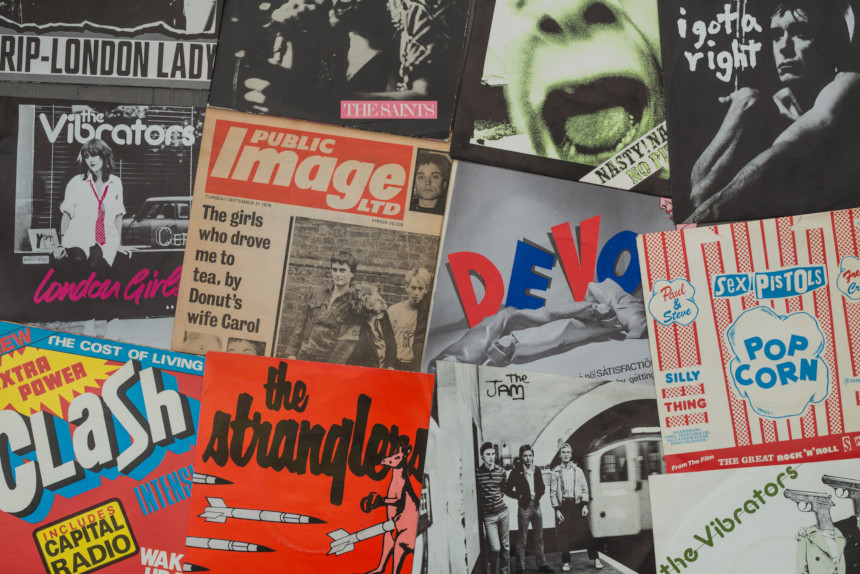Late night television has always been one of the medium’s havens for experimentation. From the early days of The Tonight Show, which were loaded with Steve Allen’s unscripted riffing, to programming like local horror movie hosts, Saturday Night Live, music performance shows, and more, late night was where you went to see something different. As cable began to expand in the late 1970s and early 1980s, more opportunities for programming were created. The USA Network was barely a year old in June of 1981 when it ran the first episode of Night Flight. The landmark four-hour show aired on Friday and Saturday nights, bringing underground music genres their first regular nationwide TV exposure while also throwing a spotlight on documentaries, comedy, animation, and cult films that wouldn’t be seen anywhere else.
The landscape of TV had been in near-constant flux for the decade prior to 1981. Broadcasting rule changes in 1971 had shortened network prime-time, sending some once-popular shows to syndication. The subsequent so-called “rural purge” saw the networks put more focus on urban and young professional audiences. Syndicated and late-night music shows became popular. Soon after, 1974 saw the launch of Home Box Office; HBO would be game-changer, as it demonstrated that Americans would pay for premium channels. This occurred along with the rise of cable, as a new breed of stations devoted to specific programming platforms, like sports and news, began a slow proliferation.
One of these nascent cable channels was the Madison Square Garden Sports Network. Launched in 1977, it had a slate of college and pro sports. In 1980, it rebranded as the USA Network, adding talk shows and kids programming to the mix. Shortly after, in February 1981, Stuart S. Shapiro, producer and film distributor, and Jeff Franklin, who ran American Talent International, teamed up to pitch USA on a new show. The concept was a new type of variety show that would exist as a late-night four-hour programming block. The block could include cult films that weren’t seen anywhere else, documentaries, music videos and interviews from cutting-edge acts, sophisticated animation, comedy and more. USA thought that the unique approach was worth a shot and greenlit it for late-night on Fridays and Saturdays. Night Flight had its maiden voyage on June 5, 1981.

Night Flight was a critical success, with outlets like TV Guide and USA Today praising it for its creativity and its artist interviews. The show was one of the few outlets in the Midwest where viewers could learn about music coming out of the punk, new wave, and Goth subcultures. Concurrent with the rise of video store culture, Night Flight was the first place where a lot of viewers could actually see the Andy Warhol or John Waters films that they’d read out. Among the movies shown were Warhol’s versions of Dracula and Frankenstein, and Waters’s Pink Flamingos. The block also included classic horror films like The Terror, imports like Daughters of Darkness, avant-garde animation like Fantastic Planet and Fritz the Cat, and new-wave science fiction like Liquid Sky. There was literally nothing else like the show on TV.

Running in its original form on USA throughout the ’80s, Night Flight made its own jump to syndication, continuing to fly from 1990 until 1992; from that point until 1996, the syndicated show consisted of “best of” packages assembled from pieces of previous original episodes. While the show was groundbreaking, and continued to be throughout its run, it had seen pieces of its mission slowly carved away by other outlets. The rise of both premium film channels and the popularity of the video store cut into the cult classic film side of things. MTV, which debuted in August 1981, also rolled out specialty shows like 120 Minutes (1986, alternative), Headbangers Ball (1987, metal), and Yo! MTV Raps (1988, hip-hop) that would air artists you previously might have only seen on Night Flight, and to a much larger audience. USA would eventually replace the show with USA Up All Night, a block mostly devoted to B-movies.
Still, nostalgia for what Night Flight had meant persisted, and NightFlight.com launched in 2015. The site offers films, videos, new shorts, and other content from the original series. The site has expanded into a pay version called NightFlightPlus, with additional content, and the programming is also available as a streaming app via venues like Apple and the Roku store. Since 2018, the Independent Film Channel (IFC) has been airing a 15-minute version of the series, incorporating highlights from the original show with additional material.
In 2021, the landscape of television bears little resemblance to that of 40 years ago. There are literally hundreds of channels, a constantly expanding number of streaming services, and seemingly endless avenues for content. For many viewers, Night Flight remains special for that most perennial of reasons: It dared to be different. There must be something to that, as the spirit of the enterprise has endured to the level where it could return, and even thrive, in such a completely different time.
Featured image: (©USA Network and Night Flight Inc.; Wikimedia Commons)
Become a Saturday Evening Post member and enjoy unlimited access. Subscribe now



